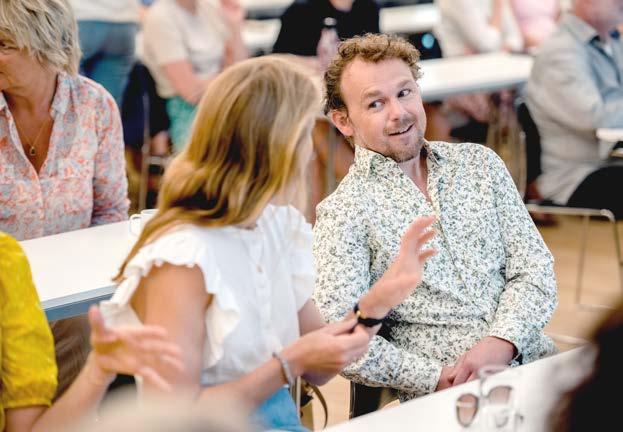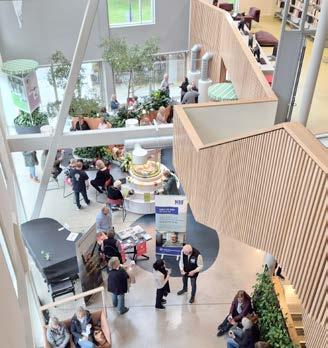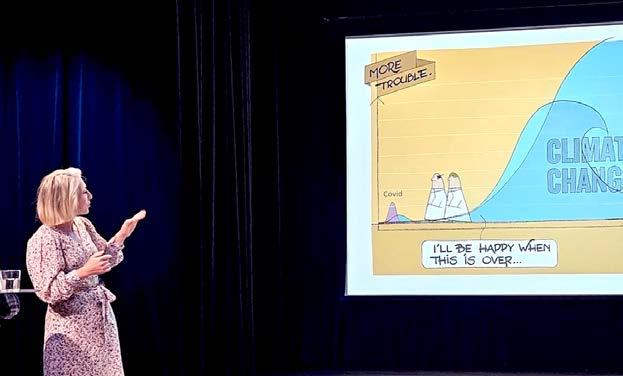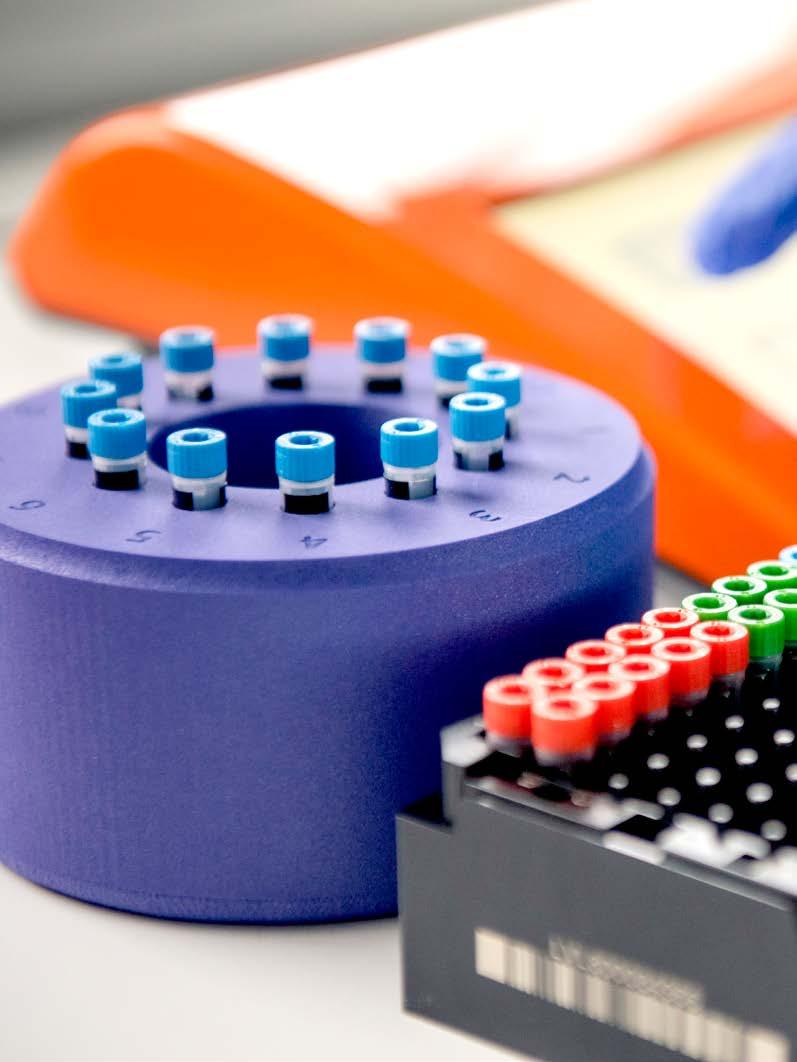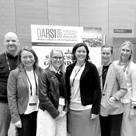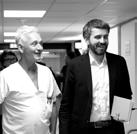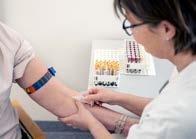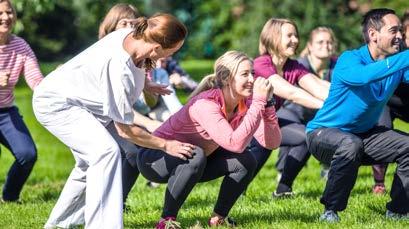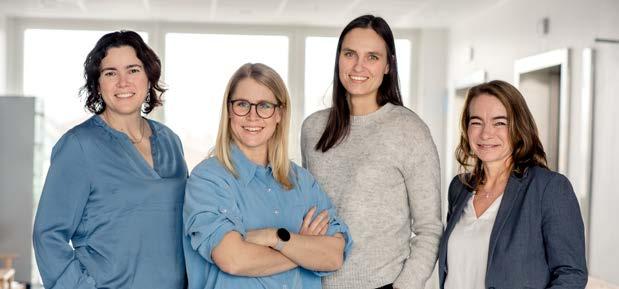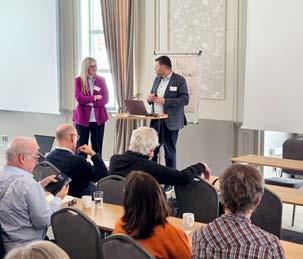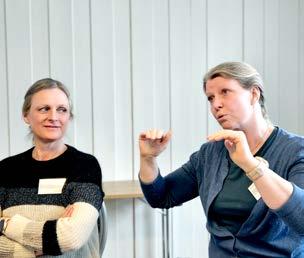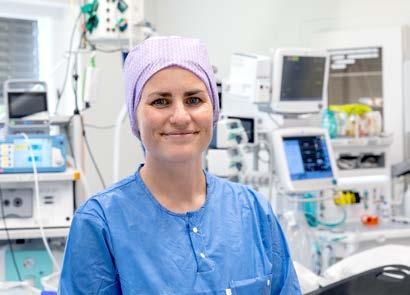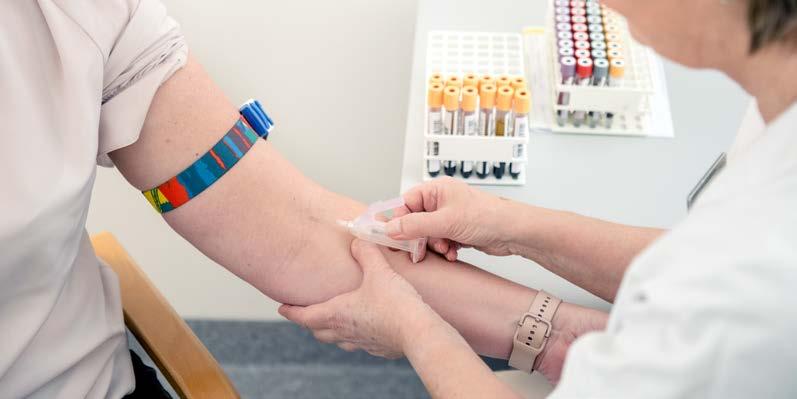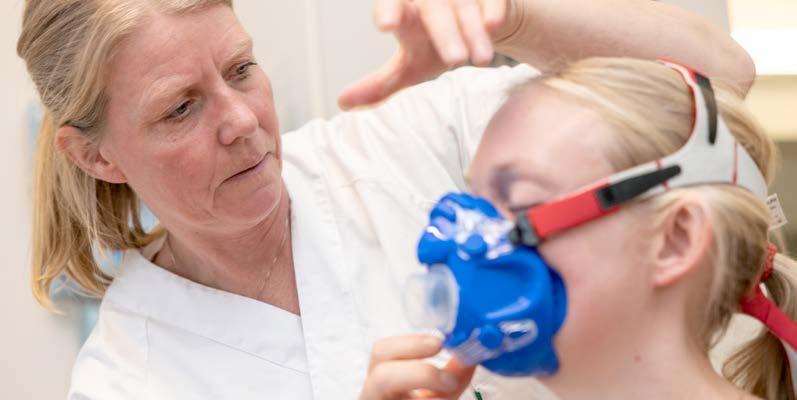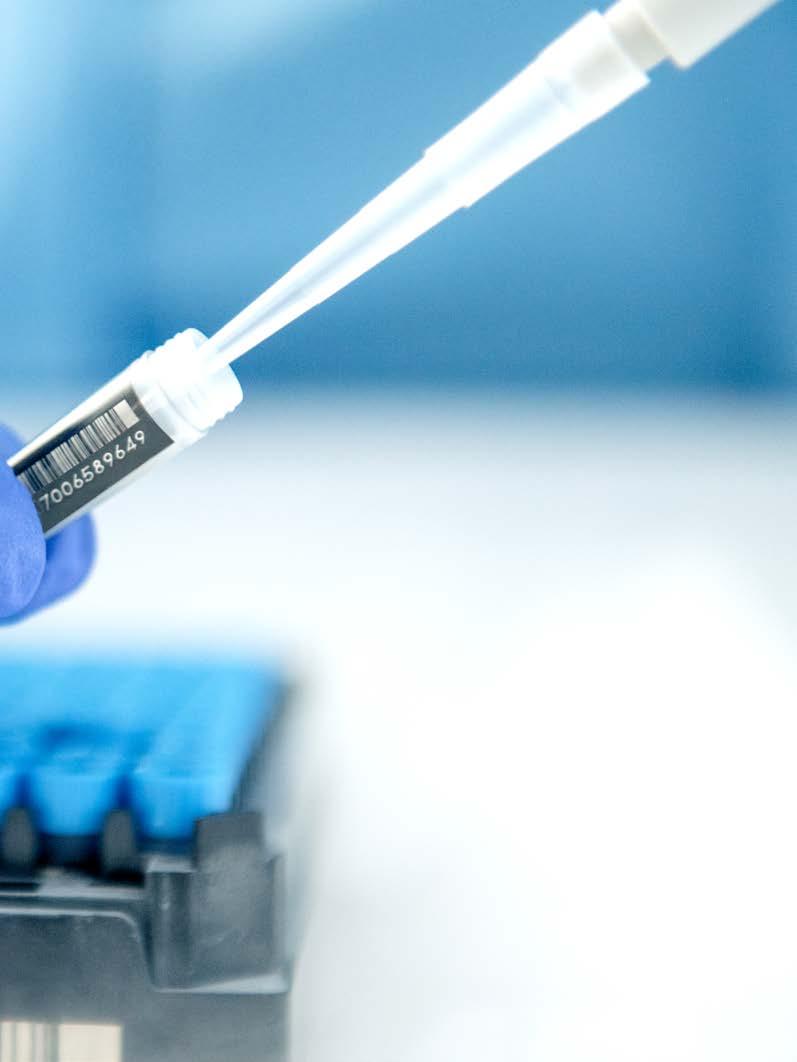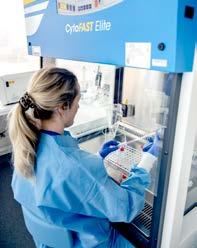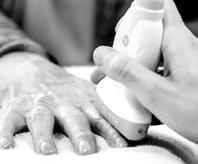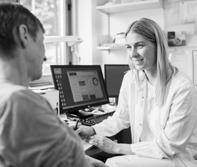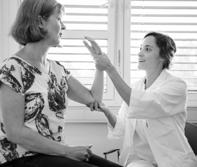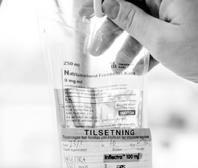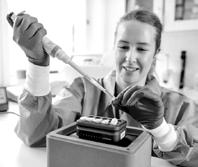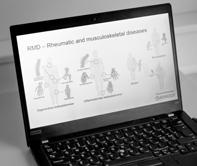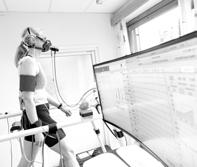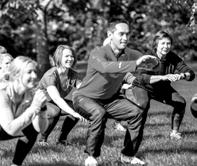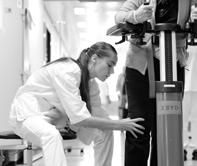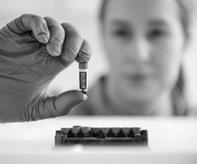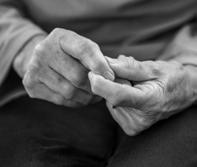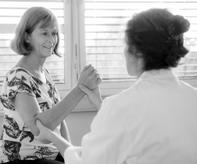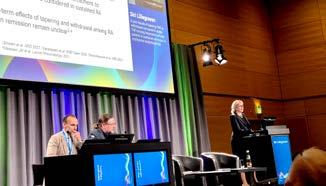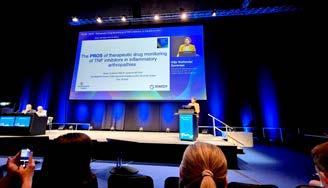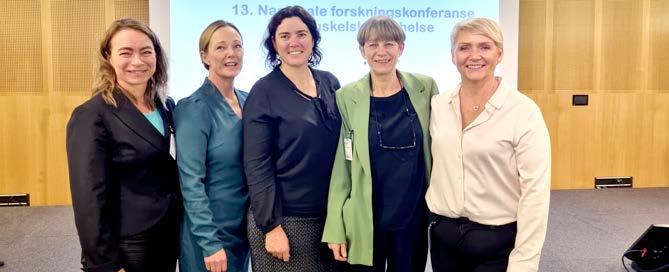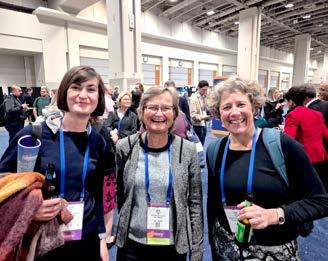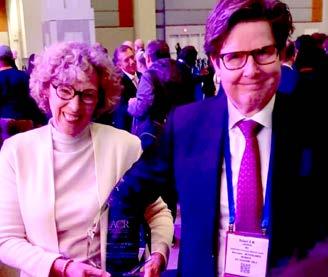Publications
Ahmadzay, Z. F., Heberg, J., Jorgensen, J. B., Ornbjerg, L. M., Ostergaard, M., Moller-Bisgaard, S., Michelsen, B., Loft, A. G., Jones, G. T., Hellamand, P., Scherer, A., Nissen, M. J., Pavelka, K., Zavada, J., Laas, K., Vorobjov, S., Nordstrom, D., Sokka-Isler, T., Regierer, A. C., Reich, A., Gudbjornsson, B., Thorarinsdottir, K., Iannone, F., Favalli, E. G., van de Sande, M., Provan, S. A., Kvien, T. K., Rodrigues, A. M., Goncalves, C. F., Codreanu, C., Mogosan, C., Rotar, Z., Prikmajer, K. P., Castrejon, I., Otero-Varela, L., Di Giuseppe, D., Wallman, J. K., Ciurea, A., Moller, B., Kenar-Artin, G., Yildirim, T. D., Macfarlane, G. J., Rotariu, O., Glintborg, B., & Hetland, M. L. (2024). Recording of non-musculoskeletal manifestations, comorbidities and safety outcomes in European spondyloarthritis registries: a survey. Rheumatol Adv Pract, 8(4), rkae135. https://doi.org/10.1093/rap/rkae135
Alirezaylavasani, A., Egner, I. M., Dahl, B., Chopra, A., de Matos Kasahara, T., Goll, G. L., Jahnsen, J., Grodeland, G., Vaage, J. T., Lund-Johansen, F., Holter, J. C., Halvorsen, B., Jorgensen, K. K., Munthe, L. A., & Kared, H. (2024). Deficient SARS-CoV-2 hybrid immunity during inflammatory bowel disease. Clin Immunol, 271, 110404. https://doi.org/10.1016/j.clim.2024.110404
Alnaqbi, K. A., Al Adhoubi, N., Aldallal, S., Al Emadi, S., Al-Herz, A., El Shamy, A. M., Hannawi, S., Omair, M. A., Saad, S. A., & Kvien, T. K. (2024). Consensus-Based Overarching Principles and Recommendations on the Use of Biosimilars in the Treatment of Inflammatory Arthritis in the Gulf Region. BioDrugs, 38(3), 449-463. https://doi.org/10.1007/s40259-023-00642-1
Amesbury, R., Ragati-Haghi, H., Mathiessen, A., Laffaye, T., Stein, R. I., Collins, J. E., Kent Kwoh, C., & Duryea, J. (2024). Gender differences in patterns of cartilage loss: Data from the Osteoarthritis Initiative. Osteoarthritis Cartilage, 32(9), 1149-1153. https://doi.org/10.1016/j.joca.2024.04.010
Aringer, M., Distler, O., Hoffmann-Vold, A. M., Kuwana, M., Prosch, H., & Volkmann, E. R. (2024). Rationale for phosphodiesterase-4 inhibition as a treatment strategy for interstitial lung diseases associated with rheumatic diseases. RMD Open, 10(4). https://doi.org/10.1136/rmdopen-2024-004704
BBayramoglu, N., Englund, M., Haugen, I. K., Ishijima, M., & Saarakkala, S. (2024). Deep Learning for Predicting Progression of Patellofemoral Osteoarthritis Based on Lateral Knee Radiographs, Demographic Data, and Symptomatic Assessments. Methods Inf Med, 63(1-02), 1-10. https://doi.org/10.1055/a-2305-2115
Bento da Silva, A., Ramiro, S., van Lunteren, M., Marques, M. L., van de Sande, M., Fongen, C., Exarchou, S., Ramonda, R., van der Heijde, D., & van Gaalen, F. A. (2024). Baseline and 2-year differences in spinal symptoms and spinal and hip mobility in early axial spondyloarthritis and non-axial spondyloarthritis chronic back pain patients. RMD Open, 10(4). https://doi.org/10.1136/rmdopen-2024-004713
Berdal, G., Kjeken, I., Linge, A. D., Aasvold, A. M., Tennebo, K., Eppeland, S. G., Hagland, A. S., Ohldieck-Fredheim, G., Valaas, H. L., Bo, I., Klokkeide, A., Azimi, M., Dager, T. N., & Sand-Svartrud, A. L. (2024). Examining the Building Blocks of Health Behavior Change in Rheumatology Rehabilitation: A Theory-Driven Qualitative Study. J Multidiscip Healthc, 17, 3649-3662. https://doi.org/10.2147/JMDH.S472713
Berdal, G., Sand-Svartrud, A. L., Linge, A. D., Aasvold, A. M., Tennebo, K., Eppeland, S. G., Hagland, A. S., Ohldieck-Fredheim, G., Lindtvedt Valaas, H., Bo, I., Klokkeide, A., Sexton, J., Azimi, M., Dager, T. N., & Kjeken, I. (2024). Does follow-up really matter? A convergent mixed methods study exploring follow-up across levels of care in rehabilitation of patients with rheumatic and musculoskeletal diseases. Disabil Rehabil, 46(23), 5531-5544. https://doi.org/10.1080/09638288.2024.2310170
Bianchi, M., Kozyrev, S. V., Notarnicola, A., Sandling, J. K., Pettersson, M., Leonard, D., Sjöwall, C., Gunnarsson, I., Rantapää-Dahlqvist, S., Bengtsson, A. A., Jönsen, A., Svenungsson, E., Enocsson, H., Kvarnström, M., Forsblad-d’Elia, H., Bucher, S. M., Norheim, K. B., Baecklund, E., Jonsson, R., Hammenfors, D., Eriksson, P., Mandl, T., Omdal, R., Padyukov, L., Andersson, H., Molberg, Ø., Diederichsen, L. P., Syvänen, A. C., Wahren-Herlenius, M., Nordmark, G., Lundberg, I. E., Rönnblom, L., & Lindblad-Toh, K. (2024). Unraveling the Genetics of Shared Clinical and Serological Manifestations in Patients With Systemic Inflammatory Autoimmune Diseases. Arthritis Rheumatol https://doi.org/10.1002/art.42988
Bolla, E., Semb, A. G., Kerola, A. M., Ikdahl, E., Petri, M., Pons-Estel, G. J., Karpouzas, G. A., Sfikakis, P. P., Quintana, R., Misra, D. P., Borba, E. F., Garcia-de la Torre, I., Popkova, T. V., Artim-Esen, B., Troldborg, A., Fragoso-Loyo, H., Ajeganova, S., Yazici, A., Aroca-Martinez, G., Direskeneli, H., Ugarte-Gil, M. F., Mosca, M., Goyal, M., Svenungsson, E., Macieira, C., Hoi, A., Lerang, K., Costedoat-Chalumeau, N., Tincani, A., Mirrakhimov, E., Acosta Colman, I., Danza, A., Massardo, L., Blagojevic, J., Yilmaz, N., Tegzova, D., Yavuz, S., Korkmaz, C., Hachulla, E., Moreno Alvarez, M. J., Munoz-Louis, R., Pantazis, N., Tektonidou, M. G., Surf, S. L. E., & collaborators, A. P. S. (2024). Prevalence and target attainment of traditional cardiovascular risk factors in patients with systemic lupus erythematosus: a cross-sectional study including 3401 individuals from 24 countries. Lancet Rheumatol, 6(7), e447-e459. https://doi.org/10.1016/S2665-9913(24)00090-0
Borrego-Yaniz, G., Ortiz-Fernández, L., Madrid-Paredes, A., Kerick, M., Hernández-Rodríguez, J., Mackie, S. L., Vaglio, A., Castañeda, S., Solans, R., Mestre-Torres, J., Khalidi, N., Langford, C. A., Ytterberg, S., Beretta, L., Govoni, M., Emmi, G., Cimmino, M. A., Witte, T., Neumann, T., Holle, J., Schönau, V., Pugnet, G., Papo, T., Haroche, J., Mahr, A., Mouthon, L., Molberg, Ø., Diamantopoulos, A. P., Voskuyl, A., Daikeler, T., Berger, C. T., Molloy, E. S., Blockmans, D., van Sleen, Y., Iles, M., Sorensen, L., Luqmani, R., Reynolds, G., Bukhari, M., Bhagat, S., Ortego-Centeno, N., Brouwer, E., Lamprecht, P., Klapa, S., Salvarani, C., Merkel, P. A., Cid, M. C., González-Gay, M. A., Morgan, A. W., Martin, J., & Márquez, A. (2024). Risk loci involved in giant cell arteritis susceptibility: a genome-wide association study. Lancet Rheumatol, 6(6), e374-e383. https://doi.org/10.1016/s2665-9913(24)00064-x
Bosch, P., Sepriano, A., Marques, M. L., van der Heijde, D., Landewe, R., van Lunteren, M., de Bruin, L., de Hooge, M., Bastiaenen, C., Exarchou, S., Ramonda, R., Fagerli, K. M., van Gaalen, F. A., & Ramiro, S. (2024). Change in different classes of chronic back pain suspicious of axial spondyloarthritis: a latent transition analysis of the SPACE cohort. RMD Open, 10(3). https://doi.org/10.1136/rmdopen-2024-004584
Brun, M. K., Gehin, J. E., Bjorlykke, K. H., Warren, D. J., Klaasen, R. A., Sexton, J., Sandanger, O., Kvien, T. K., Mork, C., Jahnsen, J., Bolstad, N., Jorgensen, K. K., Haavardsholm, E. A., Goll, G. L., & Syversen, S. W. (2024). Clinical consequences of infliximab immunogenicity and the effect of proactive therapeutic drug monitoring: exploratory analyses of the randomised, controlled NOR-DRUM trials. Lancet Rheumatol, 6(4), e226-e236. https://doi.org/10.1016/S2665-9913(23)00341-7
Bøyesen, P., & Kirkhus, E. (2024). Can whole-body MRI assessment replace clinical joint examination in assessing disease activity in children with juvenile idiopathic arthritis? Rheumatology, 63(12), 3201-3202. https://doi.org/10.1093/rheumatology/keae329
Bøyesen, P., & Weiss, P. (2024). Paediatric rheumatic diseases: insights from the bench, imaging and trials. Rheumatology, 63(SI2), SI107-SI109. https://doi.org/10.1093/rheumatology/keae355
CChristiansen, S. N., Horskjaer Rasmussen, S., Ostergaard, M., Pons, M., Michelsen, B., Pavelka, K., Codreanu, C., Ciurea, A., Glintborg, B., Santos, M. J., Sari, I., Rotar, Z., Gudbjornsson, B., Macfarlane, G. J., Relas, H., Iannone, F., Laas, K., Wallman, J. K., van de Sande, M., Provan, S. A., Castrejon, I., Zavada, J., Mogosan, C., Nissen, M. J., Loft, A. G., Barcelos, A., Erez, Y., Pirkmajer, K. P., Grondal, G., Jones, G. T., Hokkanen, A. M., Chimenti, M. S., Vorobjov, S., Di Giuseppe, D., Kvien, T. K., Otero-Varela, L., van der Horst-Bruinsma, I., Hetland, M. L., & Ornbjerg, L. M. (2024). Effectiveness of secukinumab in radiographic and non-radiographic axial spondyloarthritis: a European routine-care observational study. RMD Open, 10(3). https://doi.org/10.1136/rmdopen-2024-004166
Christiansen, S. N., Horskjaer Rasmussen, S., Pons, M., Michelsen, B., Glintborg, B., Gudbjornsson, B., Grondal, G., Vencovsky, J., Loft, A. G., Rotar, Z., Pirkmajer, K. P., Nissen, M. J., Baranova, J., Macfarlane, G. J., Jones, G. T., Iannone, F., Caporali, R., Laas, K., Vorobjov, S., Giuseppe, D. D., Olofsson, T., Provan, S. A., Fagerli, K. M., Castrejon, I., Otero-Varela, L., van de Sande, M., van der Horst-Bruinsma, I., Nordstrom, D., Kuusalo, L., Bernardes, M., Hetland, M. L., Ostergaard, M., & Midtboll Ornbjerg, L. (2024). Patient-reported outcomes in axial spondyloarthritis and psoriatic arthritis patients treated with secukinumab for 24 months in daily clinical practice. Semin Arthritis Rheum, 65, 152388. https://doi.org/10.1016/j.semarthrit.2024.152388
da Silva, A. B., Ramiro, S., Boel, A., van Lunteren, M., Marques, M. L., van de Sande, M., Fongen, C., Exarchou, S., Ramonda, R., van der Heijde, D., & van Gaalen, F. (2024). Do quality of life and work productivity change in early axial spondyloarthritis and non-axial spondyloarthritis patients after two years? Rheumatology (Oxford) https://doi.org/10.1093/rheumatology/keae346
D
Decary, S., de Wit, M., Naye, F., Barton, J. L., Fraenkel, L., Li, L. C., Brooks, P., Stacey, D., Maxwell, L. J., Campbell, W., Hofstetter, C., Voshaar, M., Meara, A., Christensen, R., Boonen, A., Suarez-Almazor, M. E., Meade, T., March, L., Jull, J. E., Alten, R., Morgan, E. M., Stewart Hazlewood, G., Barber, C. E. H., Guillemin, F., El-Miedany, Y., Mittoo, S., Robertson, T. W., Bartlett, S. J., Singh, J. A., Mannion, M., Nasef, S. I., Boel, A., Adebajo, A., Arnaud, L., Gill, T. K., Moholt, E., Burt, J., Jayatilleke, A., Hmamouchi, I., Berthelsen, D. B., Blanco, F. J., Mather, K., Maharaj, A., Sharma, S., Caso, F., Beaton, D., Shea, B., Fong, C., Fernandez, A. P., Mackie, S., Nikiphorou, E., Jones, A., Greer-Smith, R., Sloan, V. S., Akpabio, A., Strand, V., Lee, R. R., Umaefulam, V., Monti, S., Abaza, N., Schultz, G., Stones, S., Gossec, L., Nielsen, S. M., Cavallo, S., Srinivasalu, H., Constien, D., Evans, V., Tugwell, P., & Toupin-April, K. (2024).
Consensus on the definitions and descriptions of the domains of the OMERACT Core Outcome Set for shared decision making interventions in rheumatology trials. Semin Arthritis Rheum, 65, 152381. https://doi.org/10.1016/j.semarthrit.2024.152381
Del Galdo, F., Lescoat, A., Conaghan, P. G., Bertoldo, E., Čolić, J., Santiago, T., Suliman, Y. A., Matucci-Cerinic, M., Gabrielli, A., Distler, O., Hoffmann-Vold, A. M., Castellví, I., Balbir-Gurman, A., Vonk, M., Ananyeva, L., Rednic, S., Tarasova, A., Ostojic, P., Boyadzhieva, V., El Aoufy, K., Farrington, S., Galetti, I., Denton, C. P., Kowal-Bielecka, O., Mueller-Ladner, U., & Allanore, Y. (2024). EULAR recommendations for the treatment of systemic sclerosis: 2023 update. Ann Rheum Dis https://doi.org/10.1136/ard-2024-226430
Dijkshoorn, B., Hansildaar, R., Vedder, D., Soutari, N., Rudin, A., Nordstrom, D., Gudbjornsson, B., Lend, K., Uhlig, T., Haavardsholm, E. A., Grondal, G., Hetland, M. L., Heiberg, M. S., Ostergaard, M., Horslev-Petersen, K., Lampa, J., van Vollenhoven, R. F., Antovic, A., & Nurmohamed, M. T. (2024). Impaired coagulation parameters in early RA are restored by effective antirheumatic therapy: a prospective pilot study. RMD Open, 10(4). https://doi.org/10.1136/rmdopen-2024-004838
Dobrota, R., Garaiman, A., Fligelstone, K., Tyrrell Kennedy, A., Roennow, A., Allanore, Y., Carreira, P. E., Czirjak, L., Denton, C., Hesselstrand, R., Sandqvist, G., Kowal-Bielecka, O., Bruni, C., Matucci-Cerinic, M., Mihai, C., Gherghe, A. M., Mueller-Ladner, U., Kvien, T., Heiberg, T., Distler, O., & Becker, M. O. (2024). Performance of the EULAR Systemic sclerosis Impact of Disease (ScleroID) questionnaire as a patient-reported outcome measure for patients with diffuse systemic sclerosis. RMD Open, 10(4). https://doi.org/10.1136/rmdopen-2024-004653
Dubovyk, V., Vasileiadis, G. K., Fatima, T., Zhang, Y., Kapetanovic, M. C., Kastbom, A., Rizk, M., Soderbergh, A., Zhao, S. S., van Vollenhoven, R. F., Hetland, M. L., Haavardsholm, E. A., Nordstrom, D., Nurmohamed, M. T., Gudbjornsson, B., Lampa, J., Ostergaard, M., Heiberg, M. S., Sokka-Isler, T., Grondal, G., Lend, K., Horslev-Petersen, K., Uhlig, T., Rudin, A., & Maglio, C. (2024). Obesity is a risk factor for poor response to treatment in early rheumatoid arthritis: a NORD-STAR study. RMD Open, 10(2). https://doi.org/10.1136/rmdopen-2024-004227
EEspinosa-Ortega, F., Lodin, K., Dastmalchi, M., Vencovsky, J., Diederichsen, L. P., Shinjo, S. K., Danieli, M. G., Selva-O’Callaghan, A., de Visser, M., Griger, Z., Ceribelli, A., Gómez-Martin, D., Andersson, H., Vázquez-Del Mercado, M., Chinoy, H., Lilleker, J. B., New, P., Krogh, N. S., Lundberg, I. E., & Alexanderson, H. (2024). Autoantibodies and damage in patients with idiopathic inflammatory myopathies: A longitudinal multicenter study from the MYONET international network. Semin Arthritis Rheum, 68, 152529. https:// doi.org/10.1016/j.semarthrit.2024.152529
Essouma, M., de Araujo, D. B., Day, J., Conticini, E., Riopel, M. A., Elias, A. M., Paula, V. T., Omori, C. H., Guimarães, J. B., Gibson, D., Saad-Magalhaes, C., Appenzeller, S., Schiffenbauer, A., Machado, P. M., Feldman, B. M., Paik, J. J., Christopher-Stine, L., Rider, L. G., Reed, A., van der Kooi, A. J., Marrani, E., Naddaf, E., Kirkhus, E., Sanner, H., Bauer-Ventura, I., Lilleker, J. B., Gupta, L., Lucchini, M., Dimachkie, M. M., Tolend, M., Arabi, T. M. A., Moghadam-Kia, S., O’Hanlon, S., Phaneuf, S., Shinjo, S. K., & Doria, A. S. (2024). A protocol for scoping reviews on the role of whole-body and dedicated body-part magnetic resonance imaging for assessment of adult and juvenile idiopathic inflammatory myopathies. Rheumatol Int, 44(11), 2403-2409. https://doi.org/10.1007/s00296-024-05649-7
Ferreira, R. J. O., Henriques, A., Moe, R. H., Matos, C., Tveter, A. T., Osteras, N., Nogueira, P., Costa, A. S., Haavardsholm, E. A., Carmona, L., & Richards, D. (2024). Presentation of the first international research network to foster high-quality clinical trials testing non-pharmacological interventions (TRACTION network). BMJ Open, 14(7), e081864. https://doi. org/10.1136/bmjopen-2023-081864
Fjalestad, T., Wagle, T., Midtgaard, K. S., & Fraser, A. N. (2024). Brudd i proksimale humerus. Tidsskr Nor Laegeforen, 144(14). https://doi.org/10.4045/ tidsskr.24.0143
Fraser, A. N., Wagle, T. M., Karlberg, A. C., Madsen, J. E., Mellberg, M., Lian, T., Mader, S., Eilertsen, L., Apold, H., Larsen, L. B., Pripp, A. H., & Fjalestad, T. (2024). Reverse Shoulder Arthroplasty Is Superior to Plate Fixation for Displaced Proximal Humeral Fractures in the Elderly: Five-Year Follow-up of the DelPhi Randomized Controlled Trial. J Bone Joint Surg Am, 106(21), 1945-1956. https://doi.org/10.2106/JBJS.23.01431
G
Gehin, J. E., Klaasen, R. A., Klami Kristianslund, E., Jyssum, I., Sexton, J., Warren, D. J., Aletaha, D., Haavardsholm, E. A., Syversen, S. W., Goll, G. L., & Bolstad, N. (2024). Therapeutic serum level for adalimumab in rheumatoid arthritis: explorative analyses of data from a randomised phase III trial. RMD Open, 10(4). https://doi.org/10.1136/rmdopen-2024-004888
Georgiadis, S., Ornbjerg, L. M., Michelsen, B., Kvien, T. K., Di Giuseppe, D., Wallman, J. K., Zavada, J., Provan, S. A., Kristianslund, E. K., Rodrigues, A. M., Santos, M. J., Rotar, Z., Pirkmajer, K. P., Nordstrom, D., Macfarlane, G. J., Jones, G. T., van der Horst-Bruinsma, I., Hellamand, P., Ostergaard, M., & Hetland, M. L. (2024). Cut-Offs for Disease Activity States in Axial Spondyloarthritis With Ankylosing Spondylitis Disease Activity Score (ASDAS) Based on C-Reactive Protein and ASDAS Based on Erythrocyte Sedimentation Rate: Are They Interchangeable? J Rheumatol, 51(7), 673-677. https://doi.org/10.3899/jrheum.2023-1217
Gjefsen, E., Braten, L. C., Ponzi, E., Dagestad, M. H., Marchand, G. H., Kadar, T., Bakland, G., Haugen, A. J., Granviken, F., Florenes, T. W., Vetti, N., Grovle, L., Nilsen, A. T., Lunestad, A., Holmgard, T. E., Valberg, M., Bolstad, N., Espeland, A., Brox, J. I., Goll, G. L., Storheim, K., & Zwart, J. A. (2024). Efficacy of a Tumor Necrosis Factor Inhibitor in Chronic Low-Back Pain With Modic Type 1 Changes: A Randomized Controlled Trial. Arthritis Rheumatol https://doi.org/10.1002/art.43073
Glintborg, B., Hansson, M., Hammer, H. B., Klareskog, L., Saevarsdottir, S., Westerlind, H., Ronnelid, J., Gehring, I., Benson, M., Esbensen, B. A., Hetland, M. L., Padyukov, L., Kragstrup, T. W., Hauge, E. M., AxnAs, B. B., Krogh, N. S., Johannesson, M., & Askling, J. (2024). Legal obstacles jeopardise research in personalised medicineexperiences from a Nordic collaboration within rheumatology. Scand J Public Health, 52(8), 1019-1025. https://doi.org/10.1177/14034948231212711
Glintborg, B., Ostergaard, M., Jorgensen, J. B., Wallman, J. K., Moller, B., Nissen, M. J., Michelsen, B., Sexton, J., Ornbjerg, L. M., & Hetland, M. L. (2025). Biological material for biomarker research in spondyloarthritis: mapping the availability in European rheumatology registries. Rheumatology (Oxford), 64(1), 374-376. https://doi.org/10.1093/rheumatology/keae369
Gloersen, M., Kjeken, I., Tveter, A. T., Kazemi, A., Sexton, J., Dziedzic, K., Felson, D. T., Stamm, T. A., Guermazi, A., Hermann-Eriksen, M., Saether, M. I., Lundby, K., Espero, E. L., Olsen, M., Norheim, K. B., Fister, E. B., Hoff, M., Uleberg, J. K., Midtgard, I. P., Andreassen, T., Sjolie, D., Sletten, H., Hammer, H. B., Haugen, I. K., & team, P. s. (2025). Study protocol for the PICASSO trial: A randomized placebo-controlled trial to investigate the efficacy and safety of intraarticular steroid injections and an occupational therapy intervention in painful inflammatory carpometacarpal-1 osteoarthritis. Osteoarthr Cartil Open, 7(1), 100542. https://doi.org/10.1016/j.ocarto.2024.100542
Goll, G. L., & Kvien, T. K. (2024a). Biosimilar tocilizumab-better access and lower cost? Lancet Rheumatol, 6(1), e6-e8. https://doi.org/10.1016/S2665-9913(23)00268-0
Goll, G. L., & Kvien, T. K. (2024b). Generic Tofacitinib-A More Affordable JAK Inhibitor. Mayo Clin Proc, 99(1), 4-6. https://doi.org/10.1016/j.mayocp.2023.11.014
Hannani, M. T., Thudium, C. S., Gellhorn, A. C., Larkin, J., Karsdal, M. A., Lisowska-Petersen, Z., Frederiksen, P., Bager, C. L., Ladel, C., Struglics, A., Uebelhoer, M., Henrotin, Y., Bihlet, A. R., Blanco, F. J., Haugen, I. K., Kloppenburg, M., Berenbaum, F., Mobasheri, A., Bacardit, J., & Bay-Jensen, A. C. (2025). Longitudinal stability of molecular endotypes of knee osteoarthritis patients. Osteoarthritis Cartilage, 33(1), 166-175. https://doi.org/10.1016/j.joca.2024.11.002
Haugen, I. K., Felson, D. T., Abhishek, A., Berenbaum, F., Bierma-Zeinstra, S., Dziedzic, K. S., Edwards, J. J., Englund, M., Hermann-Eriksen, M., Herrero-Beaumont, G., Hill, C., Ishimori, M. L., Jonsson, H., Karjalainen, T., Leung, Y. Y., Maheu, E., Mallen, C. D., Marshall, M., Moe, R. H., Ramonda, R., Ritschl, V., Ritt, M. J., Stamm, T. A., Szekanecz, Z., van der Giesen, F., van de Stadt, L. A., van der Meulen, C., Wittoek, R., Greibrokk, E., Laheij, H., & Kloppenburg, M. (2024). 2023 EULAR classification criteria for hand osteoarthritis. Ann Rheum Dis, 83(11), 1428-1435. https://doi.org/10.1136/ard-2023-225073
Haukeland, H., Moe, S. R., Brunborg, C., Botea, A., Damjanic, N., Wivestad, G., Øvreås, H. K., Bøe, T. B., Orre, A., Garen, T., Molberg, Ø., & Lerang, K. (2024). Declining Incidence of Systemic Lupus Erythematosus in Norway 1999-2017: Data From a Population Cohort Identified by International Classification of Diseases, 10th Revision Code and Verified by Classification. Arthritis Rheumatol, 76(5), 715-725. https://doi.org/10.1002/art.42775
Haukeland, H., Moe, S. R., Brunborg, C., Botea, A., Damjanic, N., Wivestad, G., Øvreås, H. K., Bøe, T. B., Orre, A., Torhild, G., Sanner, H., Lerang, K., & Molberg, Ø. (2024). Sensitivity of classification criteria from time of diagnosis in an incident systemic lupus erythematosus cohort: a population-based study from Norway. RMD Open, 10(3). https://doi.org/10.1136/ rmdopen-2024-004395
Hellamand, P., van de Sande, M. G. H., Nurmohamed, M. T., van Vollenhoven, R. F., Hollick, R. J., Rotariu, O., Rotar, Z., Pirkmajer, K. P., Nordstrom, D., Hokkanen, A. M., Michelsen, B., Kvien, T. K., Glintborg, B., Hetland, M. L., Ostergaard, M., Loft, A. G., Pavelka, K., Zavada, J., Castrejon, I., Otero-Varela, L., Gudbjornsson, B., Palsson, O., Olofsson, T., Wallman, J. K., Ciurea, A., Nissen, M. J., Yildirim, T. D., Onen, F., Codreanu, C., Mogosan, C., Santos, M. J., Vieira-Sousa, E., Iannone, F., Frediani, B., Ornbjerg, L. M., Twisk, J. W. R., & van der Horst-Bruinsma, I. E. (2024). Sex differences in patient-reported outcomes and the association with clinical factors in axial spondyloarthritis patients treated with tumour necrosis factor inhibitors. Rheumatology (Oxford) https://doi.org/10.1093/rheumatology/keae370
Hellamand, P., van de Sande, M. G. H., Ornbjerg, L. M., Klausch, T., Eklund, K. K., Relas, H., Santos, M. J., Vieira-Sousa, E., Loft, A. G., Glintborg, B., Ostergaard, M., Lindstrom, U., Wallman, J. K., Michelsen, B., Fagerli, K. M., Castrejon, I., Gudbjornsson, B., Love, T. J., Vencovsky, J., Nekvindova, L., Rotar, Z., Tomsic, M., Diaz-Gonzalez, F., Kenar, G., Tugsal, H. Y., Iannone, F., Ramonda, R., Codreanu, C., Mogosan, C., Nissen, M. J., Moller, B., Hetland, M. L., & van der Horst-Bruinsma, I. E. (2024). Sex Differences in the Effectiveness of First-Line Tumor Necrosis Factor Inhibitors in Psoriatic Arthritis: Results From the European Spondyloarthritis Research Collaboration Network. Arthritis Rheumatol, 76(4), 587-598. https://doi.org/10.1002/art.42758
Helsingen, L. M., Langeland, E. A., Pisani, S. E. R., Vandvik, P. O., Haavardsholm, E. A., Malt, U. F., Muller, C., Stensvold, A., Kalager, M., & Bretthauer, M. (2024). Glansbilder av nasjonale faglige retningslinjer fra Helsedirektoratet. Tidsskr Nor Laegeforen, 144(5). https://doi.org/10.4045/tidsskr.24.0141
Hestetun, S. V., Rudsari, H. K., Jaholkowski, P., Shadrin, A., Haftorn, K. L., Andersen, S., Rygg, M., Nordal, E., Frei, O., Andreassen, O. A., Selvaag, A. M., Størdal, K., & Sanner, H. (2024). Incidence and Genetic Risk of Juvenile Idiopathic Arthritis in Norway by Latitude. Arthritis Rheumatol https://doi.org/10.1002/art.43040
Hestnes, I., Solberg, L. B., Meyer, H. E., Sundet, M., Rimal, R., Nordsletten, L., & Hakestad, K. A. (2024). The hip fracture incidence in the high-risk area Oslo continues to decline. Osteoporos Int, 35(9), 1615-1623. https://doi.org/10.1007/s00198-024-07156-8
Holten, K., Paulshus Sundlisaeter, N., Sexton, J., Kjorholt, K. E., Nordberg, L. B., Moholt, E., Uhlig, T., van der Heijde, D., Solomon, D. H., Haavardsholm, E. A., Lillegraven, S., Aga, A. B., & group, A. R. s. (2024). Agreement between patient-reported flares and clinically significant flare status in patients with rheumatoid arthritis in sustained remission: data from the ARCTIC REWIND trials. RMD Open, 10(3). https://doi.org/10.1136/rmdopen-2024-004444
Holten, K., Paulshus Sundlisaeter, N., Sexton, J., Nordberg, L. B., Uhlig, T., Kvien, T. K., Solomon, D. H., Haavardsholm, E. A., Lillegraven, S., Aga, A. B., & group, A. R. s. (2024). Performance of the Rheumatoid Arthritis Impact of Disease (RAID) score in relation to flares in disease activity. RMD Open, 10(1). https://doi. org/10.1136/rmdopen-2023-003486
Haaversen, A. C. B., Brekke, L. K., Kermani, T. A., Molberg, Ø., & Diamantopoulos, A. P. (2024). Vascular ultrasound as a follow-up tool in patients with giant cell arteritis: a prospective observational cohort study. Front Med (Lausanne), 11, 1436707. https://doi.org/10.3389/fmed.2024.1436707
IIkdahl, E., Semb, A. G., & Kerola, A. M. (2024). No sign of elevated cardiovascular risk in patients with seropositive rheumatoid arthritis who remain on stable antirheumatic therapy: results from the nationwide Norwegian Cardio-Rheuma Register. Ann Rheum Dis, 83(9), 1226-1227. https://doi.org/10.1136/ard-2024-225758
J
Jansen, M. P., Hodgins, D., Mastbergen, S. C., Kloppenburg, M., Blanco, F. J., Haugen, I. K., Berenbaum, F., Eckstein, F., Roemer, F. W., & Wirth, W. (2024). Can gait patterns be explained by joint structure in people with and without radiographic knee osteoarthritis? Data from the IMI-APPROACH cohort. Skeletal Radiol, 53(11), 2409-2416. https://doi.org/10.1007/s00256-024-04666-8
KKared, H., Jyssum, I., Alirezaylavasani, A., Egner, I. M., The Tran, T., Tietze, L., Lund, K. P., Tveter, A. T., Provan, S. A., Orbo, H., Haavardsholm, E. A., Vaage, J. T., Jorgensen, K., Syversen, S. W., Lund-Johansen, F., Goll, G. L., & Munthe, L. A. (2024). Dynamics of SARS-CoV-2 immunity after vaccination and breakthrough infection in rituximab-treated rheumatoid arthritis patients: a prospective cohort study. Front Immunol, 15, 1296273. https://doi.org/10.3389/fimmu.2024.1296273
Karpouzas, G. A., Ormseth, S. R., van Riel, P., Gonzalez-Gay, M. A., Corrales, A., Rantapaa-Dahlqvist, S., Sfikakis, P. P., Dessein, P., Tsang, L., Hitchon, C., El-Gabalawy, H., Pascual-Ramos, V., Contreras-Yanez, I., Colunga-Pedraza, I. J., Galarza-Delgado, D. A., Azpiri-Lopez, J. R., Semb, A. G., Misra, D. P., Hauge, E. M., & Kitas, G. (2024). Biological use influences the impact of inflammation on risk of major adverse cardiovascular events in rheumatoid arthritis. RMD Open, 10(3). https://doi.org/10.1136/rmdopen-2024-004546
Kawano-Dourado, L., Kristianslund, E. K., Zeraatkar, D., Jani, M., Makharia, G., Hazlewood, G., Smith, C., Jess, T., Stabell, C., Schatten, A., Owen, A., Gehin, J., Katsidzira, L., Weinberg, D., Bauer-Ventura, I., Tugwell, P., Moayyedi, P., Cecchi, A. V. W., Shimabuco, A., Seterelv, S., Gyuatt, G., Agoritsas, T., & Vandvik, P. O. (2024). Proactive therapeutic drug monitoring of biologic drugs in adult patients with inflammatory bowel disease, inflammatory arthritis, or psoriasis: a clinical practice guideline. BMJ, 387, e079830. https://doi.org/10.1136/bmj-2024-079830
Kawano-Dourado, L., Kulkarni, T., Ryerson, C. J., Rivera-Ortega, P., Baldi, B. G., Chaudhuri, N., Funke-Chambour, M., Hoffmann-Vold, A. M., Johannson, K. A., Khor, Y. H., Montesi, S. B., Piccari, L., Prosch, H., Molina-Molina, M., Sellares Torres, J., Bauer-Ventura, I., Rajan, S., Jacob, J., Richards, D., Spencer, L. G., Wendelberger, B., Jensen, T., Quintana, M., Kreuter, M., Gordon, A. C., Martinez, F. J., Kaminski, N., Cornelius, V., Lewis, R., Adams, W., & Jenkins, G. (2024). Adaptive multi-interventional trial platform to improve patient care for fibrotic interstitial lung diseases. Thorax, 79(8), 788-795. https://doi.org/10.1136/thorax-2023-221148
Kerola, A. M., Ikdahl, E., Engebretsen, I., Bugge, C., & Semb, A. G. (2024). Rheumatoid arthritis and the risk of ischaemic stroke after diagnosis of atrial fibrillation: a Norwegian nationwide register study. Rheumatology (Oxford), 63(11), 2997-3005. https://doi.org/10.1093/ rheumatology/keae458
Khanna, D., de Vries-Bouwstra, J., Hoffmann-Vold, A. M., Kuwana, M., Low, A. H. L., Proudman, S., Flack, M., Kukreja, A., Fagan, N., & Distler, O. (2024). A Phase II study of avenciguat, a novel soluble guanylate cyclase activator, in patients with systemic sclerosis: Study design and rationale of the VITALISScE™ study. J Scleroderma Relat Disord, 23971983241291923. https://doi.org/10.1177/23971983241291923
Killingmo, R. M., Rysstad, T., Maas, E., Pripp, A. H., Aanesen, F., Tingulstad, A., Tveter, A. T., Oiestad, B. E., & Grotle, M. (2024). Modifiable prognostic factors of high societal costs among people on sick leave due to musculoskeletal disorders: a replication study. BMC Musculoskelet Disord, 25(1), 990. https://doi. org/10.1186/s12891-024-08132-3
Killingmo, R. M., Tveter, A. T., Pripp, A. H., Tingulstad, A., Maas, E., Rysstad, T., & Grotle, M. (2024). Modifiable prognostic factors of high societal costs among people on sick leave due to musculoskeletal disorders: findings from an occupational cohort study. BMJ Open, 14(3), e080567. https://doi.org/10.1136/bmjopen-2023-080567
King, L. K., Liew, J. W., Mahmoudian, A., Wang, Q., Jansen, N. E. J., Stanaitis, I., Hung, V., Berenbaum, F., Das, S., Ding, C., Emery, C. A., Filbay, S. R., Hochberg, M. C., Ishijima, M., Kloppenburg, M., Lane, N. E., Losina, E., Mobasheri, A., Turkiewicz, A., Runhaar, J., Haugen, I. K., Appleton, C. T., Lohmander, L. S., Englund, M., Neogi, T., Hawker, G. A., & Initiative, O. E.-s. S. K. O. (2025). Multi-centre modified Delphi exercise to identify candidate items for classifying early-stage symptomatic knee osteoarthritis. Osteoarthritis Cartilage, 33(1), 155-165. https://doi.org/10.1016/j.joca.2024.10.016
King, L. K., Mahmoudian, A., Waugh, E. J., Stanaitis, I., Gomes, M., Hung, V., MacKay, C., Liew, J. W., Wang, Q., Turkiewicz, A., Haugen, I. K., Appleton, C. T., Lohmander, S., Englund, M., Runhaar, J., Neogi, T., Hawker, G. A., & Initiative, O. E.-s. S. K. O. (2024). “You don’t put it down to arthritis”: A qualitative study of the first symptoms recalled by individuals with knee osteoarthritis. Osteoarthr Cartil Open, 6(1), 100428. https://doi.org/10.1016/j.ocarto.2023.100428
Kjorholt, K. E., Sundlisaeter, N. P., Aga, A. B., Sexton, J., Olsen, I. C., Fremstad, H., Spada, C., Madland, T. M., Hoili, C. A., Bakland, G., Lexberg, A., Hansen, I. J. W., Hansen, I. M., Haukeland, H., Ljosa, M. A., Moholt, E., Uhlig, T., Kvien, T. K., Solomon, D. H., van der Heijde, D., Haavardsholm, E. A., & Lillegraven, S. (2024). Effects of tapering conventional synthetic disease-modifying antirheumatic drugs to drug-free remission versus stable treatment in rheumatoid arthritis (ARCTIC REWIND): 3-year results from an open-label, randomised controlled, non-inferiority trial. Lancet Rheumatol, 6(5), e268-e278. https://doi.org/10.1016/S2665-9913(24)00021-3
Knak, K. L., Primdahl, J., Krober, G., Fongen, C., Graversgaard, J., & Bremander, A. (2024). Development of a Physiotherapist-Coordinated Interdisciplinary Rehabilitation Intervention for People with Suspected Axial Spondyloarthritis: The SPINCODE Rehabilitation Intervention. J Clin Med, 13(22). https://doi.org/10.3390/jcm13226830
Kortekaas, M. C., Vanhaverbeke, T., Keen, H. I., Terslev, L., Hammer, H. B., D’Agostino, M. A., Wittoek, R., & group, O. h. O. U. w. (2024). Validation of HAND OA US inflammatory and structural damage score (HOUSE) for thumb base joints: Systematic review on truth & discrimination. Rheumatology (Oxford) https://doi.org/10.1093/rheumatology/keae417
Kuwana, M., Avouac, J., Hoffmann-Vold, A. M., Smith, V., Toenges, G., Alves, M., & Distler, O. (2024). Development of a multivariable prediction model for progression of systemic sclerosis-associated interstitial lung disease. RMD Open, 10(3). https://doi.org/10.1136/rmdopen-2024-004240
L
Leclair, V., Notarnicola, A., Kryštůfková, O., Mann, H., Andersson, H., Diederichsen, L. P., Vencovský, J., Holmqvist, M., Lundberg, I. E., Steele, R. J., & Hudson, M. (2024). Effect modification of cancer on the association between dysphagia and mortality in early idiopathic inflammatory myopathies. Semin Arthritis Rheum, 65, 152408. https://doi.org/10.1016/j. semarthrit.2024.152408
Lend, K., Lampa, J., Padyukov, L., Hetland, M. L., Heiberg, M. S., Nordstrom, D. C., Nurmohamed, M. T., Rudin, A., Ostergaard, M., Haavardsholm, E. A., Horslev-Petersen, K., Uhlig, T., Sokka-Isler, T., Gudbjornsson, B., Grondal, G., Frazzei, G., Christiaans, J., Wolbink, G., Rispens, T., Twisk, J. W. R., & van Vollenhoven, R. F. (2024). Association of rheumatoid factor, anti-citrullinated protein antibodies and shared epitope with clinical response to initial treatment in patients with early rheumatoid arthritis: data from a randomised controlled trial. Ann Rheum Dis, 83(12), 1657-1665. https://doi.org/10.1136/ard-2024-226024
Linde, L., Georgiadis, S., Ornbjerg, L. M., Rasmussen, S. H., Michelsen, B., Askling, J., Di Giuseppe, D., Wallman, J. K., Zavada, J., Pavelka, K., Bernardes, M., Matos, C. O., Glintborg, B., Loft, A. G., Nordstrom, D., Kuusalo, L., Moller, B., Nissen, M. J., Codreanu, C., Mogosan, C., Gudbjornsson, B., Love, T. J., Akleylek, C., Iannone, F., Kvien, T. K., Rotar, Z., Castrejon, I., Macfarlane, G. J., Hetland, M. L., & Ostergaard, M. (2024). Comparing DAPSA, DAPSA28, and DAS28-CRP in Patients With Psoriatic Arthritis Initiating a First Tumor Necrosis Factor Inhibitor Across Nine European Countries. Arthritis Care Res (Hoboken), 76(11), 1558-1565. https://doi.org/10.1002/acr.25396
Lundtoft, C., Knight, A., Meadows, J. R. S., Karlsson, Å., Rantapää-Dahlqvist, S., Berglin, E., Palm, Ø., Haukeland, H., Gunnarsson, I., Bruchfeld, A., Segelmark, M., Ohlsson, S., Mohammad, A. J., Eriksson, P., Söderkvist, P., Ronnblom, L., Omdal, R., Jonsson, R., Lindblad-Toh, K., & Dahlqvist, J. (2024). The HLA region in ANCA-associated vasculitis: characterisation of genetic associations in a Scandinavian patient population. RMD Open, 10(2). https://doi.org/10.1136/rmdopen-2023-004039
M
Magnussen, H. J., Kjeken, I., Pinxsterhuis, I., Sjovold, T. A., & Feiring, M. (2024). Dialogued into being: Constructing knowledge about hand osteoarthritis from a polyphony of voices in healthcare encounters. Int J Qual Stud Health Well-being, 19(1), 2330221. https://doi.org/10.1080/17482631.2024.2330221
Mahmoudian, A., King, L. K., Liew, J. W., Wang, Q., Appleton, C. T., Englund, M., Haugen, I. K., Lohmander, L. S., Runhaar, J., Turkiewicz, A., Neogi, T., Hawker, G. A., & Initiative, O. E.-s. S. K. O. (2024). Timing is everything: Towards classification criteria for early-stage symptomatic knee osteoarthritis. Osteoarthritis Cartilage, 32(6), 649-653. https://doi.org/10.1016/j.joca.2024.02.888
Major, T. J., Takei, R., Matsuo, H., Leask, M. P., Sumpter, N. A., Topless, R. K., Shirai, Y., Wang, W., Cadzow, M. J., Phipps-Green, A. J., Li, Z., Ji, A., Merriman, M. E., Morice, E., Kelley, E. E., Wei, W. H., McCormick, S. P. A., Bixley, M. J., Reynolds, R. J., Saag, K. G., Fadason, T., Golovina, E., O’Sullivan, J. M., Stamp, L. K., Dalbeth, N., Abhishek, A., Doherty, M., Roddy, E., Jacobsson, L. T. H., Kapetanovic, M. C., Melander, O., Andres, M., Perez-Ruiz, F., Torres, R. J., Radstake, T., Jansen, T. L., Janssen, M., Joosten, L. A. B., Liu, R., Gaal, O. I., Crisan, T. O., Rednic, S., Kurreeman, F., Huizinga, T. W. J., Toes, R., Liote, F., Richette, P., Bardin, T., Ea, H. K., Pascart, T., McCarthy, G. M., Helbert, L., Stiburkova, B., Tausche, A. K., Uhlig, T., Vitart, V., Boutin, T. S., Hayward, C., Riches, P. L., Ralston, S. H., Campbell, A., MacDonald, T. M., Group, F. S., Nakayama, A., Takada, T., Nakatochi, M., Shimizu, S., Kawamura, Y., Toyoda, Y., Nakaoka, H., Yamamoto, K., Matsuo, K., Shinomiya, N., Ichida, K., Japan Gout Genomics, C., Lee, C., Asia Pacific Gout, C., Bradbury, L. A., Brown, M. A., Robinson, P. C., Buchanan, R. R. C., Hill, C. L., Lester, S., Smith, M. D., Rischmueller, M., Choi, H. K., Stahl, E. A., Miner, J. N., Solomon, D. H., Cui, J., Giacomini, K. M., Brackman, D. J., Jorgenson, E. M., GlobalGout Genetics, C., Liu, H., Susztak, K., andMe Research, T., Shringarpure, S., So, A., Okada, Y., Li, C., Shi, Y., & Merriman, T. R. (2024). A genome-wide association analysis reveals new pathogenic pathways in gout. Nat Genet, 56(11), 2392-2406. https://doi.org/10.1038/s41588-024-01921-5
Mandl, P., D’Agostino, M. A., Navarro-Compan, V., Gessl, I., Sakellariou, G., Abhishek, A., Becce, F., Dalbeth, N., Ea, H. K., Filippucci, E., Hammer, H. B., Iagnocco, A., de Thurah, A., Naredo, E., Ottaviani, S., Pascart, T., Perez-Ruiz, F., Pitsillidou, I. A., Proft, F., Rech, J., Schmidt, W. A., Sconfienza, L. M., Terslev, L., Wildner, B., Zufferey, P., & Filippou, G. (2024). 2023 EULAR recommendations on imaging in diagnosis and management of crystal-induced arthropathies in clinical practice. Ann Rheum Dis, 83(6), 752-759. https://doi.org/10.1136/ard-2023-224771
Marques, M. L., Ramiro, S., van Lunteren, M., Stal, R. A., Landewe, R. B., van de Sande, M., Fagerli, K. M., Berg, I. J., van Oosterhout, M., Exarchou, S., Ramonda, R., van der Heijde, D., & van Gaalen, F. A. (2024). Can rheumatologists unequivocally diagnose axial spondyloarthritis in patients with chronic back pain of less than 2 years duration? Primary outcome of the 2-year SPondyloArthritis Caught Early (SPACE) cohort. Ann Rheum Dis, 83(5), 589-598. https://doi.org/10.1136/ard-2023-224959
Martinsen, L., Osteras, N., Moseng, T., & Tveter, A. T. (2024). Usage, Attitudes, Facilitators, and Barriers Toward Digital Health Technologies in Musculoskeletal Care: Survey Among Primary Care Physiotherapists in Norway. JMIR Rehabil Assist Technol, 11, e54116. https://doi.org/10.2196/54116
Mayer, G., Dobrev, D., Kaski, J. C., Semb, A. G., Huber, K., Zirlik, A., Agewall, S., & Drexel, H. (2024). Management of dyslipidaemia in patients with comorbidities: facing the challenge. Eur Heart J Cardiovasc Pharmacother, 10(7), 608-613. https://doi.org/10.1093/ehjcvp/pvae058
McAlindon, T. E., Hunnicutt, J. L., Roberts, M. B., Haugen, I. K., Schaefer, L. F., Driban, J. B., Lu, B., Duryea, J., Smith, S. E., Booth, S. L., Petty, G. A., Mathiessen, A., Zeng, L., & Eaton, C. (2024). Associations of inflammatory and metabolic biomarkers with incident erosive hand osteoarthritis in the osteoarthritis initiative cohort. Osteoarthritis Cartilage, 32(5), 592-600. https://doi.org/10.1016/j.joca.2023.10.011
Michelsen, B., Sexton, J., Kvien, T. K., Provan, S. A., & Hammer, H. B. (2024). Ultrasound evaluation contrasts clinical disease activity evaluation in rheumatoid arthritis patients with concomitant anxiety or depression. Semin Arthritis Rheum, 68, 152502. https://doi.org/10.1016/j.semarthrit.2024.152502
Moe, R. H., & Vliet Vlieland, T. P. M. (2024). Current and Future Challenges for Rehabilitation for Inflammatory Arthritis. J Clin Med, 13(6). https://doi.org/10.3390/jcm13061808
Moradi, K., Kwee, R. M., Mohajer, B., Guermazi, A., Roemer, F. W., Ibad, H. A., Haugen, I. K., Berenbaum, F., & Demehri, S. (2024). Erosive hand osteoarthritis and sarcopenia: data from Osteoarthritis Initiative cohort. Ann Rheum Dis, 83(6), 799-806. https://doi.org/10.1136/ard-2023-224997
Moseng, T., Vliet Vlieland, T. P. M., Battista, S., Beckwee, D., Boyadzhieva, V., Conaghan, P. G., Costa, D., Doherty, M., Finney, A. G., Georgiev, T., Gobbo, M., Kennedy, N., Kjeken, I., Kroon, F. P. B., Lohmander, L. S., Lund, H., Mallen, C. D., Pavelka, K., Pitsillidou, I. A., Rayman, M. P., Tveter, A. T., Vriezekolk, J. E., Wiek, D., Zanoli, G., & Osteras, N. (2024). EULAR recommendations for the non-pharmacological core management of hip and knee osteoarthritis: 2023 update. Ann Rheum Dis, 83(6), 730-740. https://doi.org/10.1136/ard-2023-225041
Mulrooney, E., Neogi, T., Dagfinrud, H., Hammer, H. B., Pettersen, P. S., Kvien, T. K., Magnusson, K., & Haugen, I. K. (2024). Hand osteoarthritis phenotypes based on a biopsychosocial approach, and their associations with cross-sectional and longitudinal pain. Osteoarthritis Cartilage, 32(8), 963-971. https://doi.org/10.1016/j.joca.2024.04.011
Muraru, S., Mihai, C., Elhai, M., Becker, M., Jordan, S., Garaiman, A., Bruni, C., Petelytska, L., Hoffmann-Vold, A. M., Distler, O., & Dobrota, R. (2024). Arthritis in patients with very early systemic sclerosis: a comprehensive clinical and prognostic analysis. Rheumatology (Oxford) https://doi.org/10.1093/rheumatology/keae247
NNordberg, L. B., Pohl, H., Haavardsholm, E. A., Lillegraven, S., & Bretthauer, M. (2024). Carbon-Footprint Analyses in RCTs - Toward Sustainable Clinical Practice. N Engl J Med, 390(24), 2234-2236. https://doi.org/10.1056/NEJMp2402018
Norden, K. R., Semb, A. G., Dagfinrud, H., Hisdal, J., Sexton, J., Fongen, C., Bakke, E., Odegard, S., Skandsen, J., Blanck, T., Metsios, G. S., & Tveter, A. T. (2024). Effect of high-intensity interval training in physiotherapy primary care for patients with inflammatory arthritis: the ExeHeart randomised controlled trial. RMD Open, 10(1). https://doi.org/10.1136/rmdopen-2023-003440
Norholm, A., Kjaer, I. G., Sondergaard, E., Nellemann, B., Nielsen, S., & Lebeck, J. (2024). Glycerol Handling in Paired Visceral and Subcutaneous Adipose Tissues in Women with Normal Weight and Upper-Body Obesity. Int J Mol Sci, 25(16).
https://doi.org/10.3390/ijms25169008
OOrbo, H. S., Bjorlykke, K. H., Sexton, J., Jyssum, I., Tveter, A. T., Christensen, I. E., Mjaaland, S., Kvien, T. K., Grodeland, G., Kro, G. B., Jahnsen, J., Haavardsholm, E. A., Munthe, L. A., Provan, S. A., Vaage, J. T., Goll, G. L., Jorgensen, K. K., & Syversen, S. W. (2024). Incidence and outcome of COVID-19 following vaccine and hybrid immunity in patients on immunosuppressive therapy: identification of protective post-immunisation anti-RBD antibody levels in a prospective cohort study. RMD Open, 10(2). https://doi.org/10.1136/rmdopen-2023-003545
Orbo, H. S., de Matos Kasahara, T., Wolf, A. S., Bjorlykke, K. H., Sexton, J., Jyssum, I., Tveter, A. T., Solum, G., Kjonstad, I. F., Bhandari, S., Christensen, I. E., Kvien, T. K., Lind, A., Kared, H., Jahnsen, J., Haavardsholm, E. A., Munthe, L. A., Provan, S. A., Vaage, J. T., Mjaaland, S., Syversen, S. W., Jorgensen, K. K., Grodeland, G., & Goll, G. L. (2025). Humoral and cellular responses to a fifth bivalent SARS-CoV-2 vaccine dose in patients with immune-mediated inflammatory diseases on tumour necrosis factor inhibitors: a prospective cohort study. Lancet Reg Health Eur, 48, 101121. https://doi.org/10.1016/j.lanepe.2024.101121
Ornbjerg, L. M., Brahe, C. H., Linde, L., Jacobsson, L., Nissen, M. J., Kristianslund, E. K., Santos, M. J., Nordstrom, D., Rotar, Z., Gudbjornsson, B., Onen, F., Codreanu, C., Lindstrom, U., Moller, B., Kvien, T. K., Barcelos, A., Eklund, K. K., Tomsic, M., Love, T. J., Can, G., Ionescu, R., Loft, A. G., Mann, H., Pavelka, K., van de Sande, M., van der Horst-Bruinsma, I. E., Suarez, M. P., Sanchez-Piedra, C., Macfarlane, G. J., Iannone, F., Michelsen, B., Hyldstrup, L. H., Krogh, N. S., Ostergaard, M., & Hetland, M. L. (2024). Drug effectiveness of 2nd and 3rd TNF inhibitors in psoriatic arthritis - relationship with the reason for withdrawal from the previous treatment. Joint Bone Spine, 91(4), 105729. https://doi.org/10.1016/j.jbspin.2024.105729
Ornbjerg, L. M., Georgiadis, S., Kvien, T. K., Michelsen, B., Rasmussen, S., Pavelka, K., Zavada, J., Loft, A. G., Kenar, G., Solmaz, D., Glintborg, B., Rodrigues, A., Santos, M. J., Di Guiseppe, D., Wallman, J. K., Ciurea, A., Nissen, M. J., Rotar, Z., Pirkmajer, K. P., Nordstrom, D., Hokkanen, A. M., Gudbjornsson, B., Palsson, O., Hetland, M. L., & Ostergaard, M. (2024). Impact of patient characteristics on ASDAS disease activity state cut-offs in axial spondyloarthritis: results from nine European rheumatology registries. RMD Open, 10(4). https://doi.org/10.1136/rmdopen-2024-004644
Ornbjerg, L. M., Rugbjerg, K., Georgiadis, S., Rasmussen, S. H., Jacobsson, L., Loft, A. G., Iannone, F., Fagerli, K. M., Vencovsky, J., Santos, M. J., Moller, B., Pombo-Suarez, M., Rotar, Z., Gudbjornsson, B., Cefle, A., Eklund, K., Codreanu, C., Jones, G., van der Sande, M., Wallman, J. K., Sebastiani, M., Michelsen, B., Zavada, J., Nissen, M. J., Sanchez-Piedra, C., Tomsic, M., Love, T. J., Relas, H., Mogosan, C., Hetland, M. L., & Ostergaard, M. (2024). Patient-Reported Outcomes (PROs) and PRO Remission Rates in 12,262 Biologic-Naive Patients With Psoriatic Arthritis Treated With Tumor Necrosis Factor Inhibitors in Routine Care. J Rheumatol, 51(4), 378-389. https://doi.org/10.3899/jrheum.2023-0764
PPettersen, P. S., Haugmark, T., Berg, I. J., Hammer, H. B., Neogi, T., Zangi, H., Haugen, I. K., & Provan, S. A. (2025). Pain sensitization in fibromyalgia. Cross-sectional associations between quantitative sensory testing of pain sensitization and fibromyalgia disease burden. Eur J Pain, 29(1), e4771. https://doi.org/10.1002/ejp.4771
Pons, M., Georgiadis, S., Ostergaard, M., Ahmadzay, Z. F., Glintborg, B., Heberg, J., Christensen, S. N., Rasmussen, S., Loft, A. G., Castrejon, I., Sanchez-Alonso, F., Iannone, F., Nordstrom, D., Hokkanen, A. M., Ciurea, A., Nissen, M. J., Zavada, J., Pavelka, K., Rotar, Z., Pirkmajer, K. P., Michelsen, B., Mielnik, P., Bernardes, M., Khmelinskii, N., Laas, K., Vorobjov, S., Codreanu, C., Macfarlane, G. J., Jones, G. T., Gudbjornsson, B., Palsson, O., Wallman, J. K., Horst-Bruinsma, I. V., Onen, F., Hetland, M. L., & Ornbjerg, L. M. (2024). Four-year secukinumab treatment outcomes in European real-world patients with axial spondyloarthritis and psoriatic arthritis. Joint Bone Spine, 105824. https://doi.org/10.1016/j.jbspin.2024.105824
Provan, S. A., Ahlfors, F., Bakland, G., Hu, Y., Kristianslund, E. K., Ikdahl, E., Kvien, T. K., Aalokken, T. M., & Hoffmann-Vold, A. M. (2024). A validation of register-derived diagnoses of interstitial lung disease in patients with inflammatory arthritis: data from the NOR-DMARD study. Scand J Rheumatol, 53(3), 173-179. https://doi.org/10.1080/03009742.2024.2306716
Provan, S. A., Litleskare, S., Flaten, O. E., Pettersen, H., Roset, L., & Calogiuri, G. (2024). Participatory Development of a Virtual Reality Exercise Program for People with Chronic Pain. Games Health J, 13(5), 332-334. https://doi.org/10.1089/g4h.2023.0229
Provan, S. A., Ljung, L., Kristianslund, E. K., Michelsen, B., Uhlig, T., Jonmundsson, T., Sexton, J., Gudbjornsson, B., Di Giuseppe, D., Hetland, M. L., Reynisdottir, G. B., Glintborg, B., Relas, H., Aaltonen, K., Kvien, T. K., & Askling, J. (2024). Interstitial Lung Disease in Patients With Rheumatoid Arthritis or Psoriatic Arthritis Initiating Biologics and Controls: Data From 5 Nordic Registries. J Rheumatol, 51(11), 1111-1118. https://doi.org/10.3899/jrheum.2024-0252
R
Reales, G., Amos, C. I., Benveniste, O., Chinoy, H., De Bleecker, J., De Paepe, B., Doria, A., Gregersen, P. K., Lamb, J. A., Limaye, V., Lundberg, I. E., Machado, P. M., Maurer, B., Miller, F. W., Molberg, Ø., Pachman, L. M., Padyukov, L., Radstake, T. R., Reed, A. M., Rider, L. G., Rothwell, S., Selva-O’Callaghan, A., Vencovský, J., Wedderburn, L. R., & Wallace, C. (2024). Discovery of new myositis genetic associations through leveraging other immune-mediated diseases. HGG Adv, 5(4), 100336. https://doi.org/10.1016/j.xhgg.2024.100336
Roemer, F. W., Jansen, M. P., Maschek, S., Mastbergen, S. C., Marijnissen, A. K., Wisser, A., Heiss, R., Weinans, H. H., Blanco, F. J., Berenbaum, F., Kloppenburg, M., Haugen, I. K., Eckstein, F., Hunter, D. J., Guermazi, A., & Wirth, W. (2024). Fluctuation of Bone Marrow Lesions and Inflammatory MRI Markers over 2 Years and Concurrent Associations with Quantitative Cartilage Loss. Cartilage, 19476035241287694. https://doi.org/10.1177/19476035241287694
Roemer, F. W., Jarraya, M., Hayashi, D., Crema, M. D., Haugen, I. K., Hunter, D. J., & Guermazi, A. (2024). A perspective on the evolution of semi-quantitative MRI assessment of osteoarthritis: Past, present and future. Osteoarthritis Cartilage, 32(4), 460-472. https://doi.org/10.1016/j.joca.2024.01.001
Ruscitti, P., Allanore, Y., Baldini, C., Barilaro, G., Bartoloni Bocci, E., Bearzi, P., Bellis, E., Berardicurti, O., Biaggi, A., Bombardieri, M., Cantarini, L., Cantatore, F. P., Caporali, R., Caso, F., Cervera, R., Ciccia, F., Cipriani, P., Chatzis, L., Colafrancesco, S., Conti, F., Corberi, E., Costa, L., Currado, D., Cutolo, M., D’Angelo, S., Del Galdo, F., Di Cola, I., Di Donato, S., Distler, O., D’Onofrio, B., Doria, A., Fautrel, B., Fasano, S., Feist, E., Fisher, B. A., Gabini, M., Gandolfo, S., Gatto, M., Genovali, I., Gerli, R., Grembiale, R. D., Guggino, G., Hoffmann-Vold, A. M., Iagnocco, A., Iaquinta, F. S., Liakouli, V., Manoussakis, M. N., Marino, A., Mauro, D., Montecucco, C., Mosca, M., Naty, S., Navarini, L., Occhialini, D., Orefice, V., Perosa, F., Perricone, C., Pilato, A., Pitzalis, C., Pontarini, E., Prete, M., Priori, R., Rivellese, F., Sarzi-Puttini, P., Scarpa, R., Sebastiani, G., Selmi, C., Shoenfeld, Y., Triolo, G., Trunfio, F., Yan, Q., Tzioufas, A. G., & Giacomelli, R. (2024). Tailoring the treatment of inflammatory rheumatic diseases by a better stratification and characterization of the clinical patient heterogeneity. Findings from a systematic literature review and experts’ consensus. Autoimmun Rev, 23(7-8), 103581. https://doi.org/10.1016/j.autrev.2024.103581
S
Sagen, J. S., Kjeken, I., Habberstad, A., Linge, A. D., Simonsen, A. E., Lyken, A. D., Irgens, E. L., Framstad, H., Lyby, P. S., Klokkerud, M., Dagfinrud, H., Moe, R. H., & RehabNytte, C. (2024). Patient Involvement in the Rehabilitation Process Is Associated with Improvement in Function and Goal Attainment: Results from an Explorative Longitudinal Study. J Clin Med, 13(2). https://doi.org/10.3390/jcm13020320
Sand-Svartrud, A. L., Kjeken, I., Skardal, R. F., Gjerset, G. M., Johnsen, T. J., Lyken, A. D., Dagfinrud, H., & Moe, R. H. (2024). Completeness of repeated patient-reported outcome measures in adult rehabilitation: a randomized controlled trial in a diverse clinical population. BMC Health Serv Res, 24(1), 1648. https://doi.org/10.1186/s12913-024-12103-8
Sande, N. K., Kirkhus, E., Lilleby, V., Tomterstad, A. H., Aga, A. B., Flatø, B., & Bøyesen, P. (2024). Validity of an ultrasonographic joint-specific scoring system in juvenile idiopathic arthritis: a cross-sectional study comparing ultrasound findings of synovitis with whole-body magnetic resonance imaging and clinical assessment. RMD Open, 10(1). https://doi.org/10.1136/rmdopen-2023-003965
Scheffler, J. M., Drevinge, C., Lindholm, C., Gjertsson, I., Lend, K., Lund Hetland, M., Ostergaard, M., Uhlig, T., Schrumpf Heiberg, M., Haavardsholm, E. A., Nurmohamed, M. T., Lampa, J., Sokka-Isler, T., Nordstrom, D., Horslev-Petersen, K., Gudbjornsson, B., Grondal, G., van Vollenhoven, R., Carlsten, H., Lorentzon, M., Hultgard Ekwall, A. K., Rudin, A., & Islander, U. (2025). Circulating Baseline CXCR3(+)Th2 and Th17 Cell Proportions Correlate With Trabecular Bone Loss After 48 Weeks of Biological Treatment in Early Rheumatoid Arthritis. ACR Open Rheumatol, 7(1), e11742. https://doi.org/10.1002/acr2.11742
Sebbag, E., Lauper, K., Molina-Collada, J., Aletaha, D., Askling, J., Gente, K., Bertheussen, H., Bitoun, S., Bolek, E. C., Burmester, G. R., Canhao, H. M., Chatzidionysiou, K., Curtis, J. R., Danlos, F. X., Guimaraes, V., Hetland, M. L., Iannone, F., Kostine, M., Kragstrup, T. W., Kvien, T. K., Regierer, A. C., Schulze-Koops, H., Silva-Fernandez, L., Szekanecz, Z., Buch, M. H., Finckh, A., & Gottenberg, J. E. (2024). 2024 EULAR points to consider on the initiation of targeted therapies in patients with inflammatory arthritis and a history of cancer. Ann Rheum Dis https://doi.org/10.1136/ard-2024-225982
Sebbag, E., Molina-Collada, J., Ndoye, R., Aletaha, D., Askling, J., Gente, K., Bertheussen, H., Bitoun, S., Bolek, E. C., Buch, M. H., Burmester, G. R., Canhao, H. M., Chatzidionysiou, K., Curtis, J. R., Danlos, F. X., Guimaraes, V., Hetland, M. L., Iannone, F., Kostine, M., Kragstrup, T. W., Kvien, T. K., Regierer, A. C., Schulze-Koops, H., Sedmak, N., Silva-Fernandez, L., Szekanecz, Z., Lauper, K., Finckh, A., & Gottenberg, J. E. (2024). Systematic literature review and meta-analysis informing the EULAR points to consider on the initiation of targeted therapies in patients with inflammatory arthritis and a history of cancer. Ann Rheum Dis https://doi.org/10.1136/ard-2024-225981
Semb, A. G., Sanders, J., & Kaski, J. C. (2024). All about clinical trials. Eur Heart J Cardiovasc Pharmacother, 10(6), 484-485. https://doi.org/10.1093/ehjcvp/pvae055
Sepriano, A., Ramiro, S., Landewe, R., van der Heijde, D., Ohrndorf, S., FitzGerald, O., Backhaus, M., Larche, M., Homik, J., Saraux, A., Hammer, H. B., Terslev, L., Ostergaard, M., Burmester, G., Combe, B., Dougados, M., Hitchon, C., Boire, G., Lambert, R. G., Dadashova, R., Paschke, J., Hutchings, E. J., & Maksymowych, W. P. (2024). Adding ultrasound to treat-to-target shows no benefit in achieving clinical remission nor in slowing radiographic progression in rheumatoid arthritis: results from a multicenter prospective cohort. Clin Rheumatol, 43(6), 1833-1844. https://doi.org/10.1007/s10067-024-06978-5
Sparks, J. A., Dieudé, P., Hoffmann-Vold, A. M., Burmester, G. R., Walsh, S. L., Kreuter, M., Stock, C., Sambevski, S., Alves, M., & Emery, P. (2024). Design of ANCHOR-RA: a multi-national cross-sectional study on screening for interstitial lung disease in patients with rheumatoid arthritis. BMC Rheumatol, 8(1), 19. https://doi.org/10.1186/s41927-024-00389-4
Stewart, S., Gamble, G., Taylor, W., Su, I., Merriman, T., Mihov, B., Horne, A., Stamp, L., Pascart, T., Andres, M., Peral-Garrido, M. L., Neogi, T., Norkuviene, E., Vazquez-Mellado, J., FitzGerald, J. D., Terslev, L., Hammer, H. B., Uhlig, T., D’Agostino, M. A., Martin, J., Sun, M., Li, C., & Dalbeth, N. (2024). Development of gout in people with asymptomatic hyperuricemia: study protocol for a 5-year prospective cohort. BMJ Open, 14(11), e090415. https://doi.org/10.1136/bmjopen-2024-090415
Sundet, M., Gyllensten, K. S., Dybvik, E., Eikvar, K. H., Hallan, G., Lillegraven, S., & Lund Eriksen, M. (2024). Five-Year Results of the Salto XT Revision Ankle Arthroplasty. Foot Ankle Int, 45(10), 1083-1092. https://doi.org/10.1177/10711007241264561
Sundet, M., Sundin, U., Godo, A., Sydnes, K., Valland, H., Sexton, J., Martinsen, M., Paus, M., Rasmussen, H. S., & Lillegraven, S. (2024). Use of direct-acting anticoagulants (DOACs) delays surgery and is associated with increased mortality in hip fracture patients. Eur J Trauma Emerg Surg, 50(4), 1851-1857. https://doi.org/10.1007/s00068-024-02532-9
T
Tamargo, J., Agewall, S., Borghi, C., Ceconi, C., Cerbai, E., Dan, G. A., Ferdinandy, P., Grove, E. L., Rocca, B., Magavern, E., Sulzgruber, P., Semb, A. G., Sossalla, S., Niessner, A., Kaski, J. C., & Dobrev, D. (2024). New pharmacological agents and novel cardiovascular pharmacotherapy strategies in 2023. Eur Heart J Cardiovasc Pharmacother, 10(3), 219-244. https://doi.org/10.1093/ehjcvp/pvae013
Tengesdal, S., Diamantopoulos, A. P., Brekke, L. K., Besada, E., & Myklebust, G. (2024). Norwegian society of rheumatology recommendations on diagnosis and treatment of patients with Polymyalgia Rheumatica: a narrative review. BMC Rheumatol, 8(1), 58. https://doi.org/10.1186/s41927-024-00422-6
Terpstra, S. E. S., van de Stadt, L. A., Berenbaum, F., Blanco, F. J., Haugen, I. K., Mastbergen, S. C., Weinans, H., Jansen, M. P., Rosendaal, F. R., & Kloppenburg, M. (2024). Severity and progression of structural hand OA is not associated with progression of structural knee OA: The IMI-APPROACH cohort. Osteoarthr Cartil Open, 6(3), 100487. https://doi.org/10.1016/j.ocarto.2024.100487
Thomassen, E. E. K., Berg, I. J., Kristianslund, E. K., Tveter, A. T., Bakland, G., Gossec, L., Hakim, S., Macfarlane, G. J., de Thurah, A., & Osteras, N. (2024). Patients with axial spondyloarthritis reported willingness to use remote care and showed high adherence to electronic patient-reported outcome measures: an 18-month observational study. Rheumatol Int, 44(10), 2089-2098. https://doi.org/10.1007/s00296-024-05673-7
Tveter, A. T., Osteras, N., Nossum, R., Eide, R. E. M., Klokkeide, A., Matre, K. H., Olsen, M., & Kjeken, I. (2024). Long-term changes in pain and function in patients with thumb base osteoarthritis receiving brief information, occupational therapy and/or surgery. Musculoskeletal Care, 22(2), e1883. https://doi.org/10.1002/msc.1883
Tveter, A. T., Varsi, C., Maarnes, M. K., Pedersen, S. J., Christensen, B. S., Blanck, T. B., Nyheim, S. B., Pelle, T., & Kjeken, I. (2024). Development of the Happy Hands Self-Management App for People with Hand Osteoarthritis: Feasibility Study. JMIR Form Res, 8, e59016. https://doi.org/10.2196/59016
U
Uhlig, T., Karoliussen, L. F., Sexton, J., Provan, S. A., Haavardsholm, E. A., Dalbeth, N., & Hammer, H. B. (2024). Non-adherence to urate lowering therapy in gout after 5 years is related to poor outcomes-results from the NOR-Gout study. Rheumatology (Oxford) https://doi.org/10.1093/rheumatology/keae514
VVasileiadis, G. K., Zhang, Y., Fatima, T., van Vollenhoven, R., Lampa, J., Gudbjornsson, B., Haavardsholm, E. A., Nordstrom, D., Grondal, G., Horslev-Petersen, K., Lend, K., Heiberg, M. S., Hetland, M. L., Nurmohamed, M., Uhlig, T., Sokka-Isler, T., Rudin, A., & Maglio, C. (2025). Circulating Adipokines and Response to Treatment in Patients With Early Rheumatoid Arthritis. ACR Open Rheumatol, 7(1), e11756. https://doi.org/10.1002/acr2.11756
Vikse, J. (2024). Revmatisk eller revmatologisk sykdom? Tidsskr Nor Laegeforen, 144(13). https://doi.org/10.4045/tidsskr.24.0297
Vrints, C., Andreotti, F., Koskinas, K. C., Rossello, X., Adamo, M., Ainslie, J., Banning, A. P., Budaj, A., Buechel, R. R., Chiariello, G. A., Chieffo, A., Christodorescu, R. M., Deaton, C., Doenst, T., Jones, H. W., Kunadian, V., Mehilli, J., Milojevic, M., Piek, J. J., Pugliese, F., Rubboli, A., Semb, A. G., Senior, R., Ten Berg, J. M., Van Belle, E., Van Craenenbroeck, E. M., Vidal-Perez, R., Winther, S., & Group, E. S. C. S. D. (2024a). 2024 ESC Guidelines for the management of chronic coronary syndromes. Eur Heart J, 45(36), 3415-3537. https://doi.org/10.1093/eurheartj/ehae177
Vrints, C., Andreotti, F., Koskinas, K. C., Rossello, X., Adamo, M., Ainslie, J., Banning, A. P., Budaj, A., Buechel, R. R., Chiariello, G. A., Chieffo, A., Christodorescu, R. M., Deaton, C., Doenst, T., Jones, H. W., Kunadian, V., Mehilli, J., Milojevic, M., Piek, J. J., Pugliese, F., Rubboli, A., Semb, A. G., Senior, R., Ten Berg, J. M., Van Belle, E., Van Craenenbroeck, E. M., Vidal-Perez, R., Winther, S., & Group, E. S. C. S. D. (2024b). [2024 ESC Guidelines for the management of chronic coronary syndromes]. G Ital Cardiol (Rome), 25(12 Suppl 1), e1-e132. https://doi.org/10.1714/4375.43725
WWilk, M., Michelsen, B., Losinska, K., Kavanaugh, A., Korkosz, M., & Haugeberg, G. (2024). Exploring 5-year changes in general and skin health-related quality of life in psoriatic arthritis patients. Rheumatol Int, 44(4), 675-685. https://doi.org/10.1007/s00296-024-05536-1
Wolf, A. S., Bjorlykke, K. H., Orbo, H. S., Bhandari, S., Solum, G., Kjonstad, I. F., Jyssum, I., Nygaard, U. C., Kristoffersen, A. B., Christensen, I. E., Josefsson, S. E., Lund, K. P., Chopra, A., Osen, J. R., Chaban, V., Tveter, A. T., Sexton, J., Kvien, T. K., Jahnsen, J., Haavardsholm, E. A., Grodeland, G., Vaage, J. T., Provan, S. A., Kared, H., Lund-Johansen, F., Munthe, L. A., Syversen, S. W., Goll, G. L., Jorgensen, K. K., & Mjaaland, S. (2024). T cell responses to repeated SARS-CoV-2 vaccination and breakthrough infections in patients on TNF inhibitor treatment: a prospective cohort study. EBioMedicine, 108, 105317. https://doi.org/10.1016/j.ebiom.2024.105317
Y
Yau, M. S., Okoro, P. C., Haugen, I. K., Lynch, J. A., Nevitt, M. C., Lewis, C. E., Torner, J. C., & Felson, D. T. (2024). Assessing the association of epigenetic age acceleration with osteoarthritis in the Multicenter Osteoarthritis Study (MOST). Osteoarthritis Cartilage, 32(5), 585-591. https://doi.org/10.1016/j.joca.2023.11.024
Z
Zeraatkar, D., Pitre, T. S., Kirsh, S., Jassal, T., Ling, M., Hussain, M., Couban, R. J., Kawano-Dourado, L., Kristianslund, E. K., & Olav Vandvik, P. (2024). Proactive therapeutic drug monitoring of biologic drugs in patients with inflammatory bowel disease, inflammatory arthritis, and psoriasis: systematic review and meta-analysis. BMJ Med, 3(1), e000998. https://doi.org/10.1136/bmjmed-2024-000998
Zhang, W., Huang, G., Zheng, S., Lin, J., Hu, S., Zhuang, J., Zhou, Z., Du, G., Zheng, K., Chen, S., Zhang, Q., Mikish, A., Hoffmann-Vold, A. M., Kuwana, M., Matucci-Cerinic, M., Furst, D. E., & Wang, Y. (2024). Risk prediction modelling in idiopathic inflammatory myositis-associated interstitial lung disease based on seven factors including serum KL-6 and lung ultrasound B-lines. Clin Exp Rheumatol https://doi.org/10.55563/clinexprheumatol/ylf0oe
Zhu, C., Han, Y., Byun, J., Xiao, X., Rothwell, S., Miller, F. W., Lundberg, I. E., Gregersen, P. K., Vencovsky, J., Shaw, V. R., McHugh, N., Limaye, V., Selva-O’Callaghan, A., Hanna, M. G., Machado, P. M., Pachman, L. M., Reed, A. M., Rider, L. G., Molberg, Ø., Benveniste, O., Radstake, T., Doria, A., De Bleecker, J. L., De Paepe, B., Maurer, B., Ollier, W. E., Padyukov, L., Wedderburn, L. R., Chinoy, H., Lamb, J. A., & Amos, C. I. (2024). Meta-analyses uncover the genetic architecture of Idiopathic Inflammatory Myopathies. Arthritis Rheumatol https://doi.org/10.1002/art.43088
Zink, S., Kjeken, I., & Feiring, M. (2024). Who Does What in Hand Osteoarthritis Care? A Qualitative Study of Boundary Work Between Rheumatologists and Occupational Therapists in Norway. J Multidiscip Healthc, 17, 3995-4009. https://doi.org/10.2147/JMDH.S467297
The REMEDY center is funded by a large grant (128 million NOK) from the Research Council of Norway and generous funding (32 million NOK) from the Olav Thon Foundation.
The individual research projects conducted within the REMEDY center are wholly or partly funded by:
• Research Council of Norway (different programs/grants)
• SouthEastern Norway Regional Health Authority
• Program for Clinical treatment research (KLINBEFORSK)
• Horizon Europe
• The Coalition for Epidemic Preparedness Innovations (CEPI)
• DAM Foundation
• Norwegian Health Association
• Diakonhjemmet Hospital Research Fund
• Norwegian Women’s Public Health Association (NKS)
• Norwegian Rheumatism Association Research Fund
• Anders Jahre´s Foundation for the Promotion of Science
• The Norwegian Fund for PostGraduate Training in Physiotherapy
• Dr. Trygve Gythfeldt and Wife’s Research Foundation
• Pahles Legacy
• Eckbos Legacy
• Grethe Harbitz Legacy
• Karen Fossum Legacy
• NordForsk
• EULAR
• Scandinavian Rheumatology Research Foundation
• The EuroSpA Coordinating Centre
• Klaveness Innovation Support
• Pharmaceutical IIR grants (Novartis Norway AS, Galapagos Biopharma Norway AS, Pfizer AS, Boehringer Ingelheim Norway KS, BristolMyers Squibb SARL)
• Own contribution from the Host and Partner institutions


























